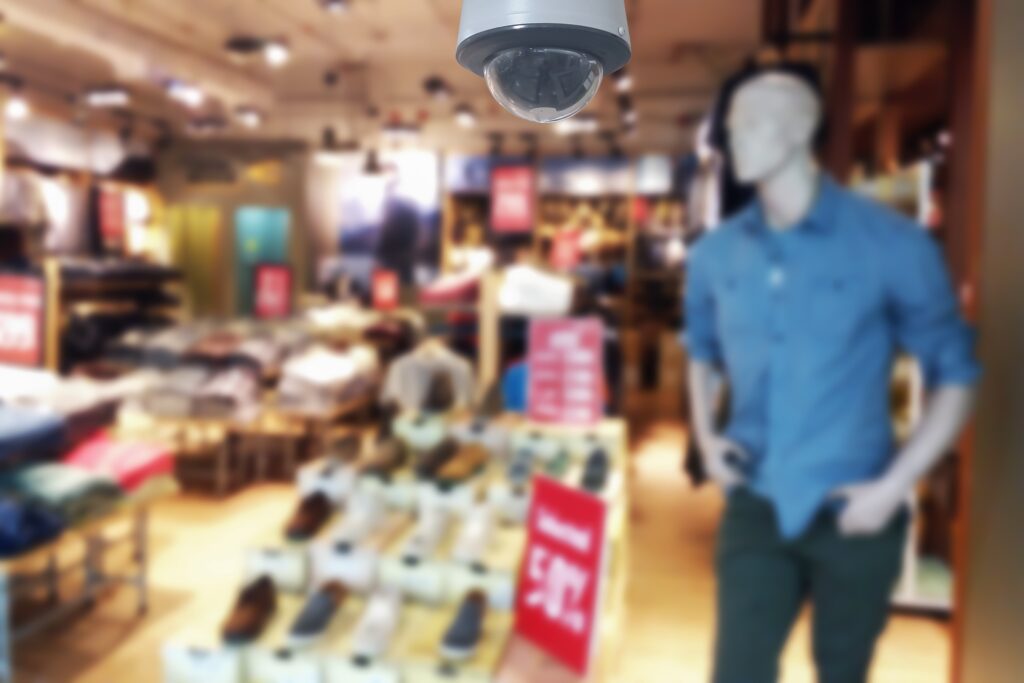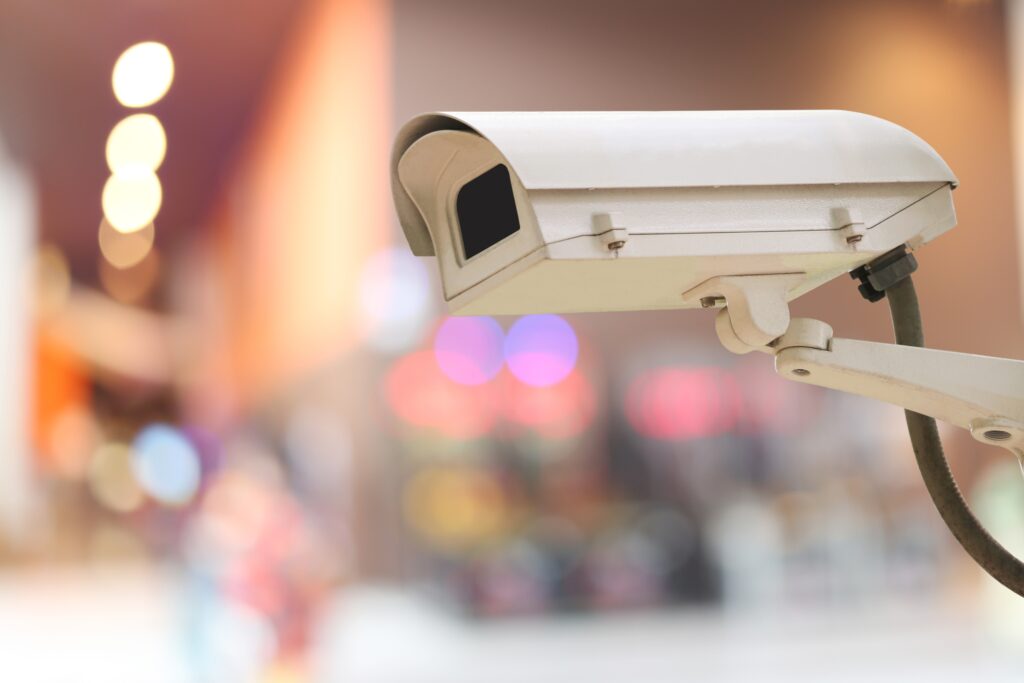Loss prevention (LP) continues to be a pivotal area of focus for many of our clients. With technology advancing at a breakneck pace, IT leaders are uniquely positioned to play a pivotal role in mitigating external losses, ensuring both profitability and security.
A recent study by the National Retail Federation (NRF) unveils the top 10 reported security measures perceived to be ‘most successful strategies in combating external losses over the past 12 months’. This comprehensive list echoes the importance of technology in loss prevention but also the value of human intervention and collaboration.
1. CCTV and video systems
2. Locking cases, lock boxes and cages
3. Exception-based reporting systems/programs
4. LP staffing
5. Enhanced, upgraded or integrated CCTV systems
6. Off-duty officers
7. Automatic pushout prevention systems
8. Computer-based or virtual training for employees
9. Awareness campaigns for employees
10. Collaboration with retail partners, law enforcement and prosecutors
The Takeaway for IT leaders: Integrating technological solutions with human elements and collaborative efforts is the foundation for an effective loss prevention strategy. By adopting a multifaceted approach, retail IT leaders can significantly contribute to reducing external losses, enhancing security, and boosting profitability.
Below we’ll explore the latest in CCTV, AI and LP, and finally some notes around how to ready your employees for the next stage in LP.
The New Age of CCTV
The latest in closed-circuit television (CCTV) cameras have revolutionized surveillance systems providing next-level security and monitoring.
One of the advancements in this next generation of CCTV cameras is the high-resolution precision. With high pixel density, these cameras capture details with exceptional clarity.
Passive surveillance is a thing of the past. The latest CCTV cameras include intelligent video analytics. With artificial intelligence, these systems can detect patterns, anomalies, and even predict potential security threats. Integrating these features helps to provide proactive security measures.
In the past, CCTV cameras often struggled with low-light issues, which frequently compromised the effectiveness of nighttime surveillance. Today’s CCTV cameras now have enhanced low-light performance. This feature enables clear footage even for the dark corners of your storage rooms and distribution centers.
Integrating CCTV cameras into a networked ecosystem facilitates real-time monitoring and remote access for facilities. Live feeds and instant alerts can be sent via smartphones and computers to enable real-time responsiveness.
Integration of AI into Loss Prevention
Imagine a scenario where advanced technology not only predicts these losses but actively prevents them.
This reality is closer than you think thanks to Artificial Intelligence (AI). Yet, as IT Leaders at national retailers know, integrating such sophisticated technology across vast networks of stores can be challenging.
Deploying new advanced technology always requires thoughtful planning and AI is no different. Here are some of the critical concepts to consider:
The Importance of Data Quality from the Start
The foundation of a successful AI-driven loss prevention strategy lies in the quality of the data. Retailers must prioritize establishing robust data management practices, ensuring accuracy, completeness, and cleanliness. This can involve auditing existing data, implementing standardized data entry protocols, and utilizing data cleansing tools. By treating data as the valuable asset it is, retailers can empower their AI tools to detect patterns, identify theft, and prevent losses with unprecedented precision.
Prioritizing Employee Training and Engagement
The effectiveness of AI in loss prevention is significantly enhanced when employees understand and embrace the technology. It’s important for retailers to invest in comprehensive training programs that demystify AI for their staff, demonstrating its benefits and how to leverage it in daily operations.
Engaging employees in the deployment process can also foster a culture of innovation, encouraging them to become active participants in the deployment of AI.
Building Scalable Infrastructure
The scalability of infrastructure is critical to accommodate the data processing needs of AI applications. Retailers should assess their current IT infrastructure and plan for upgrades that can handle increased loads, ensuring seamless performance. This could mean investing in cloud solutions that offer scalability or enhancing on-premise systems with more robust hardware. A scalable infrastructure ensures that as your AI initiatives grow, your systems can keep up without becoming a bottleneck.
Ensuring Seamless Integration with Existing Systems
The integration of AI solutions with existing retail systems is crucial for a smooth transition. Retailers should look for AI solutions designed with compatibility in mind, capable of integrating with legacy systems and enhancing their functionality rather than disrupting it. This might involve working with vendors who understand the retail landscape and can offer customized integration services. By ensuring AI tools work in tandem with existing technologies, retailers can unlock even more power to move their loss prevention strategies forward.
Seizing the Moment for AI Integration
The time for AI integration in loss prevention is now. The practical steps outlined offer a roadmap for retailers to get started. By emphasizing data quality, employee training, scalable infrastructure, and seamless system integration, retailers can avoid common pitfalls and harness the full potential of AI. This strategic approach not only strengthens loss prevention efforts but also positions retailers well in today’s competitive market.
Employees Have a Role in LP
With LP, the role of employees extends far beyond traditional responsibilities. It’s essential for retail staff to be well-versed not only in the foundational aspects of LP but also in the technological tools that are reshaping the industry. This demands a shift in perspective, recognizing employees as critical agents in a comprehensive LP strategy.
Through detailed training, employees can learn the intricacies of technologies such as CCTV and AI-powered systems, understanding their application in real-world scenarios. This education equips them with the knowledge to identify potential threats effectively and leverage technology to mitigate risks.
In addition, empowering employees in their LP roles fosters a culture of vigilance and collaboration. It’s about teaching them about the significance of their contributions to the broader LP goals through strategic use of technology and keen observation.
Regular training sessions should heighten the importance of their interaction with these tools, emphasizing how their insights and actions can complement technological solutions. By positioning employees as vital to the LP ecosystem, retailers can create a blend of human intuition and technological innovation, creating a more secure and efficient environment for both staff and customers.
Next Steps
The future of retail security relies on a combination of technology and human assistance. The commitment to nurturing a knowledgeable workforce, equipped with the tools and understanding to leverage AI and CCTV innovations, marks a pivotal shift in how retail environments can safeguard their assets while fostering a culture to be proactive.
If your organization is in need of a partner to assist in the deployment of networked security solutions, AI tools and CCTV, contact us to discuss your project.


